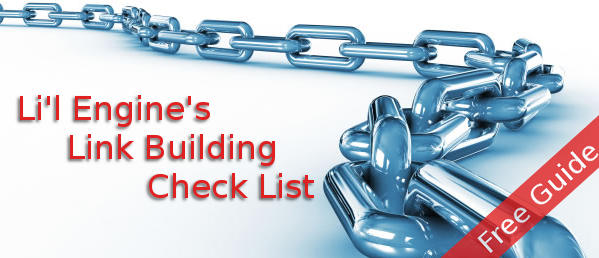
Link building also sometimes goes by the name of “offsite optimization.” It is very important to your SEO efforts, and it’s also one of the most time and labor intensive. You can’t wish other webmasters into linking to your site, and when they do, what anchor text are they using? How will you get inbound links to deep pages in your content?
OK, sure: great content is important. But who has time to wait around for the world to finally discover your great content? You need a great plan to go along with your great content. Consider link building as a vital business strategy for your website’s long term success. It has to be integrated into your standard business practice and regularly tended to. Here is a checklist to determine if you’re doing what you need to in order to continually build up your constellation of links.
1. The easy stuff. Submit your site to DMOZ and the other standard directories. Submit your content for syndication and submit the occasional press release when it’s newsworthy. Create RSS feeds and submit it to feed lists.
2. If you have a mailing list of happy customers, thank them and offer them a free benefit for helping spread the word on a new product page. Give them link text that they can use in their own home pages and blogs. The freebie can be a coupon for free shipping on their next order, a free e-book download, or something similar.
3. Make sure that every page on your site has a “link to this page” box. This will make it easy for people to create deep links with correct keywords.
4. Offer a free web tool or script that performs a service and links back to your site. Make sure you have at least one keyword in the link text.
5. Find out who links to your competitor. Using a backlink competitor tool (as in the screen shot) can help. There’s nothing wrong with contacting sites that link to your competitor and asking for a back link. Be polite about it, and you’ll be amazed how many sites will agree.
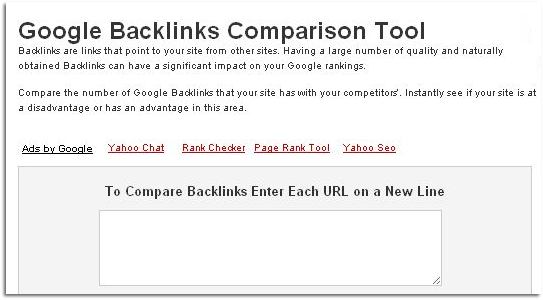
6. Stay away from link swapping and link buying. These practices will hurt your site’s PageRank and SERP standing. Link buying can get you banned from Google altogether.
7. Do you have the time to devote to link building strategies? If not, seriously consider outsourcing this work to a reputable SEO business that has a good track record of getting links. If you do have the time, build that time into your schedule, because it is very important to the long term health and growth of your site.
8. Keep a written record of the back links you pick up and what page they link to. This will benefit you in numerous ways. For one, it will help you judge which pages are most popular. It may point up deficiencies in pages that aren’t getting much link love, and it will let you know when your pace of back link building lags, indicating that you need to step up the effort.
9. While back links are SEO gold, internal link building is important too. Don’t neglect this aspect of your SEO strategy.
10. Make sure there are links to your site on all the social profiles you have for your business or website. Build a link into your email signature, and on forums and comment threads that allow it use a link to your site in some of your comments, but by no means all of them. If comments are monitored and it looks like the only purpose for your comment is trolling for back links (Comments like, “Great post! I hope you’ll stop by my site at http://www.myawesomewebsite.com”), then you might get booted off the site.
11. Offer to write a guest post on a blog you admire that’s relevant to your website. This is a great way to squeeze yourself some healthy link juice.
12. Don’t get links from sites that themselves link out to SEO related sites like link building software, link building clubs, paid link building, and SEO forums.
13. Don’t get links from sites that discuss Google PageRank in their ad sections. These have a whiff of desperation about them that Google can sniff out easily.
At the root of all this is knowing why you’re building links and what you want to get out of the process. If you do it right, you can get more traffic to your site, better SERP position, higher PageRank, and a healthier bottom line for your business. It’s easy to get overwhelmed with all the things a webmaster has to do to keep his or her site in top form and attracting all the traffic it deserves. There’s social media strategy that requires time and effort, on-page SEO to be tended to, link building, and all the while if it’s an e-commerce site, you have to actually run the business too!
Most webmasters have to map out the tasks specifically: “Twitter / Facebook updates every day by noon; 30 minutes on link building strategy every day after lunch; 30 minutes monitoring competing sites every morning first thing;” etc. So many of these things seem like things you can easily do on the side, but they’re important enough to require your full attention, and you could easily let them slip unless you write them into your work schedule. Good content, good strategies, and good discipline are what it takes, and no, there really aren’t any shortcuts.
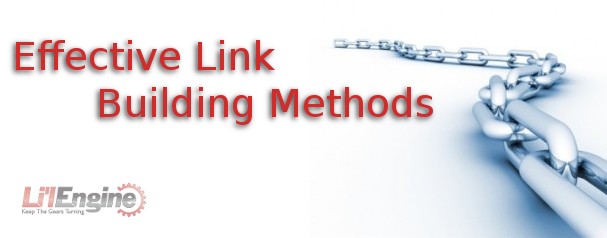
Link building is still one of the most important factors in your search engine results page (SERP) rankings and in your Google PageRank and will be from the foreseeable future. Links are still the fundamental connectors on the web, and legitimate links are still a great way to judge importance of a site and just how trustworthy a site is. Google’s search algorithm has learned to devalue purchased or traded links and emphasizing trusted, genuine links. And when those links are further bolstered by the vintage of the domain, user data, and other factors that are hard to fake, that’s when SERP rankings rise.
Here are 15 great ways to build up the kind of links that will increase your PageRank and your SERP position.
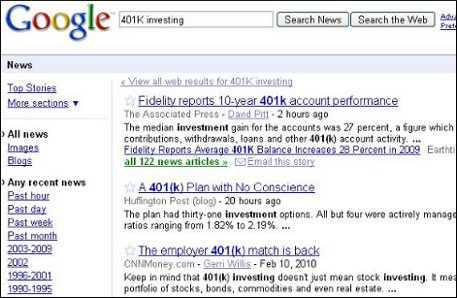 Link to sites in the news in your niche. To find them, do a Google news search on your niche or keywords, as you can see in the screen shot for news searches on 401k investing.
Link to sites in the news in your niche. To find them, do a Google news search on your niche or keywords, as you can see in the screen shot for news searches on 401k investing.And for good measure, here’s another link: 5 really bad ways to get links.
You can’t get away from link building when it comes to getting traffic, moving upward in the SERP listings and increasing your PageRank. But don’t try to take the easy way out. The work you put in getting links legitimately will be well worth it over the long term, while ill-gotten links will sabotage your efforts very quickly.

Ideally, building up great text links should be a long term process. You may have heard the joke about the American tourist in England asking how they get their lawns so beautiful. The Englishman answers, “It’s quite a straightforward process. Just plant it, cut it, roll it, and water it for 400 years.” Links tended to in a long term fashion will turn out to be valuable, but most webmasters don’t have the web equivalent of 400 years (which is probably about two years) to cultivate all those links.

This post assumes that you know what Twitter is (a place where you can post 140-character microblog posts) and how to get an account (Just go to Twitter.com and it will tell you how). Twitter is becoming a more important in the world of SEO because now Google is showing “real time” search results from there, as you can see in the screen shot. When you see Twitter results in a Google results page, they update in real time. However, there is a “pause” link at the top of the Twitter results so you can freeze them long enough to get a better look.

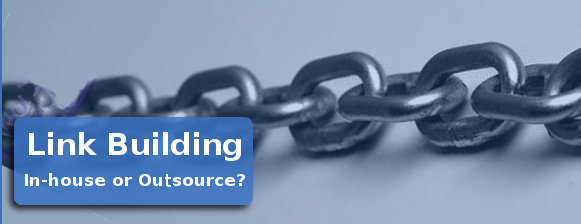
Search engine optimization (SEO) and link building are two of the most important things that determine the success of your website. You may wonder if you should work the SEO in house, or if you should outsource it from the start. There are a couple of situations in which you would be better off outsourcing from the get-go:
But for many website owners, doing SEO and link building in-house is a good first step. Sometimes it can be done perfectly well in-house, but if not, you can always hire an SEO expert if you need one. If you know the general ideas behind SEO and the importance of link building, there is a ton of free guidance online, much of it provided by Google, the search engine that much SEO is directed at.
Link building is one of those things that can’t be rushed too much. You don’t need loads and loads of links, but you need a few high quality back links that have no association whatsoever with spammers. Search engines do not take link spamming lightly. They will either demote your site in the rankings or kick it out of their indexes altogether and make you basically start over and prove to them that you’ve reformed your ways before letting you back in.
The sites that provide links to you give search engines context about your site’s content, and can give the search engine algorithm indications of its quality. The links have to be relevant, however. A link from a great website that has absolutely nothing to do with your site’s content won’t do you much, if any, good. Link exchanges and partnerships that are developed strictly for the sake of providing back links – relevant or not – dilute the quality of the links and violate Google’s webmaster guidelines. Your search engine rankings may drop drastically as a result of using these schemes. Links need to be obtained the old fashioned way: by earning them with good, unique content.
But while back links are important to your search engine ranking, they aren’t everything. After all, a brand new site may contain great, original content, but may not have had time to get any back links yet. If this is the case, there are many other things the site owner can do to boost search engine results while those back links develop organically.
Keywords are very important. If you are not sure which keywords you should use, then Google has a keyword tool that can help you. Suppose my website was about “green” energy products. That’s a hot topic these days, so keywords are going to be competitive. How can I choose the best keywords? As you can see in the first screen shot, I used the Google keyword tool to research the three keywords “windmill,” “green energy,” and “alternate energy.”
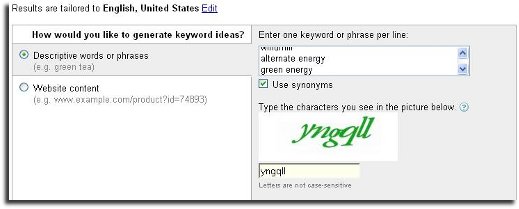
The second screen shot shows just part of a huge list of suggested keywords for my site. Now, if I choose keywords that have enormous monthly search volumes, I’m going to be competing with a lot of other sites, and with those keywords, I’ll probably inch my way up the search engine rankings at best.
The “sweet spot” I’m looking for is keywords that are relevant to my site that have search volumes in the tens of thousands rather than the hundreds of thousands per month. The keywords “windmill energy” and “windmill electricity” look promising. They come in at around 10,000 searches locally and globally, so I have a better chance of competing, and yet they’re keywords that are relevant and could eventually become competitive, hopefully after my site has worked its way to the top of the search engine rankings.
Another way to use the keyword tool is (looking at the first screen shot again) is with website content I like. I would search for a high ranking website about green energy and feed that site’s url to the keyword tool. The keyword tool will then use the content of that site to generate a list of keywords.
There are a number of other things you can do to get your SEO process going in-house. Submit a sitemap to the search engines so that their bots will be able to crawl your site easily. Make sure your site has an understandable hierarchy and that each page is reachable from one or more static links. Use relevant keywords in your image metatags. And ensure that your title elements and ALT attributes are descriptive and accurate. Fix or remove broken links. Make sure each page has a reasonable number of links. One hundred or more links are too many. Keep it down to 10 or 20.
These practices won’t take an inordinate amount of time, and Google has a lot of webmaster tools that show you exactly what to do to improve your site’s search engine rankings. If you try the basics and your site does not improve in the rankings, and you have fresh, original content, then it may be time to call in an expert on SEO. But in a lot of cases, if you approach it methodically you can do wonders for your site’s search engine rankings (and Google PageRanks) in-house. In fact, if you have summer interns, it would be a great project for one of them.
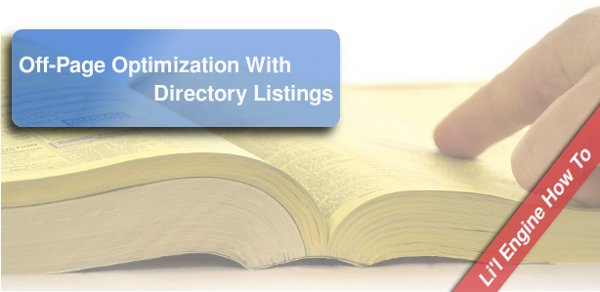
Submitting articles to article directories is what is known as “off page optimization.” Off page optimization is doing what you can to drive traffic to and create back links to your actual web pages. The best search engine optimization involves both on page and off page optimization. Submitting articles to directories won’t help much if your pages have little or no useful content, or if your pages themselves have not been optimized through the use of keywords, meta tags, and anchor text links. But once you have your pages in top shape, submitting articles to directories can definitely give your website’s traffic a boost.
Articles promoting your website should soft sell your site. In fact, many article directories have strict rules about how many so-called self serving links you can include in your articles. That’s because people don’t look for articles in order to be sold a piece of software or a new nutritional supplement: they read articles to gather information. Your job is to provide that information and also provide a way for the article reader to get to your site if he or she so chooses.
Even the article directories that are quite strict about links to your website in the content do provide “about us” boxes or “resources” boxes where you can include links to your site, and you should definitely do this. Anyone interested in the article content enough to want more will be looking to the resources box to link to more information. Because there are so many free article submission directories, you have plenty of outlets for articles about your site. You won’t have a huge influx of traffic overnight, but over time, your PageRank will increase, as will your traffic. Below are several of the advantages and a few disadvantages to directory submission of articles.
As helpful and useful as article directory submission is, there are a few downsides to it.
As an example, look at the first screen shot, where I have entered three woodworking terms into the entry box: woodworking tools, sanding blocks, and table saws. In the second screen shot you see just part of a long list of suggested keywords along with their relevance and search volume. At first glance it looks like the terms “woodworking hand tools,” “antique woodworking tools,” and “woodworking tool” could be good keyword candidates because they’re highly relevant, and the search volume is high, but not so high that I can’t work my way past the competition.
The moral of the story is: when you’re writing articles for submission to articles directories, ignore keywords at your peril. And, just FYI, the top five articles directories, according to vretoolbar.com and based on Google PageRank and Alexa Ranking are as follows: ezinearticles.com (Alexa=131; PR=6), articlesbase.com (Alexa=451; PR=5), buzzle.com (Alexa=1305; PR=5), goarticles.com (Alexa=1601; PR=6), and helium.com (Alexa=1872; PR=6).

Press release websites can be one of many search engine optimization tactics for your website. They give you back links, and will reach people that you wouldn’t reach otherwise. There are a number of paid websites like PR.com, Marketwire, and PRweb. Just as an example, PRweb (shown in the first screen shot) offers two levels of visibility, high visibility, which costs $199 a year, or platinum, which costs $499 a year.
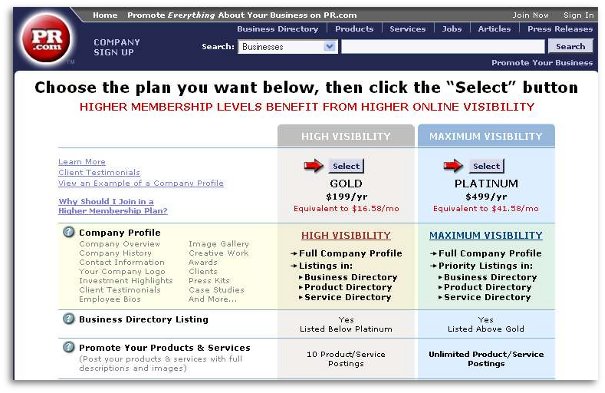
Are these services worth it? Only you can answer that. It will depend on your budget and on whether you think the investment will pay off in terms of higher ad revenue on your site or better conversion rates. Paid PR websites offer company profiles listed in various directories, plus paid and free press release distribution, and anchor text links.
When you write press releases, whether for paid or free PR sites, always write for your audience. Targeted traffic is what you want. Have you ever found blog posts with very provocative titles that turn out to be about something else completely? That’s not what you want to do with press releases. You have to be genuine. After all, if you have great content, the people who visit are more likely to stick around, bookmark your site, and generate lots of page views.
That said, use the anchor text and headline in a press release to focus on your targeted keywords. Use the headline to focus on one of your primary keywords, and use links sprinkled throughout the press release. If the PR site you’re using gives you a resource box, an “About Us” page, or a profile, these are all good places to provide a link to your home page. Use the links within the press release to link to more specific, relevant content.
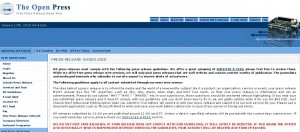 Theopenpress.com (see second screen shot for some of their guidelines) is a free service as long as you follow their guidelines to the letter. They don’t edit free press releases, so if the ones you submit don’t meet the guidelines, they simply delete them.
Theopenpress.com (see second screen shot for some of their guidelines) is a free service as long as you follow their guidelines to the letter. They don’t edit free press releases, so if the ones you submit don’t meet the guidelines, they simply delete them.
PR Leap has free and paid services that kick out your press release where it can be seen by bloggers, consumers, and journalists, reaching all the main search engines, news websites, and newswires.
PR Inside is another free press release service. You create a free account to submit press releases. The home page is a repository for the latest press releases, which are not catagorized. It’s free, and no doubt has a lot of readers, but the right person seeing your press release appears to be largely a matter of coincidental timing, so this shouldn’t be your sole press release outlet.
i-newswire.com allows free press releases to be submitted as long as they aren’t spammy (“Buy Our Awesome Software Today!” and the like). Free press releases are not allowed to have any graphics or links in them. This site also has paid accounts, which offer more perks.
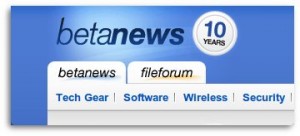 betanews.com is a tech-oriented news site that you can join for free and submit content to. It caters to IT professionals, programmers, site designers, computer security, and relevant legal issues.
betanews.com is a tech-oriented news site that you can join for free and submit content to. It caters to IT professionals, programmers, site designers, computer security, and relevant legal issues.
If you’re interested in comparing several paid and free press release websites side by side, Star Reviews has such a comparison here.
The general idea behind using press release websites is that you should exhaust all the free possibilities before going to a fee-based service, unless you just have a generous budget to begin with, which most people don’t.
Perhaps the most important rule for writing press releases is to make them newsworthy. People and press release sites are good at filtering out the so-called press releases that are actually sales pitches. You might have something they’re interested in, but if their first impression is “spam press release,” they’ll scroll right on by it.
If you don’t know how to write a press release, or don’t think you’d do a good job, there are plenty of copywriters out there willing to do it for you. You may be able to find someone who has written for the very sites you want to send the release to.
Since most free press release sites require you to create an account, go ahead and register with several of them at once – at least 10 or 12. That way when you have your press release ready to go, all you have to do is copy and paste it properly for each press release site. Proofread press releases meticulously before submitting them. Some sites won’t let you change press releases after they’ve been submitted, and you don’t want to be the guy advising software buyers to “be perpared.”
If the site allows graphics, audio, or video, and if you have it, be sure to include it. Keep track of the places you submitted your press release to and whether or not people read it. You can do this in a spreadsheet if you’re the organized type, or you can use a simple pen and paper to keep track, but you need to do this so you’ll know which sites give you the most exposure for your time and effort.
Learn when to hold back. Once or twice a month is a good frequency with which to send out press releases. Once a day is overkill and people will rapidly come to recognize your press releases and ignore them. Once you find the sites that you like best, it’s a good idea to stagger your releases. If you submit to ten sites in one day, it will scroll off of ten sites pretty much at the same time. If you stagger your press releases, you’ll have them on at least one site at all times.
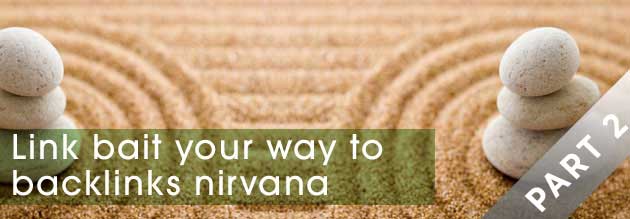
In part one of this post series – introduction to the linkbait concept, I explained the concept of link bait was a derivative of Viral marketing. While link bait campaigns aren’t as resource intensive as viral campaigns; they do still require a creative process of planning, creation and distribution. In part two of link bait your way to backlinks nirvana, we are going to explore the various elements that make up the framework to a great link bait. Each element is an important factor that contributes to the success or failure of your linkbait piece.

Link bait content should be hosted on the website you are trying to optimize for, often on a page of its own or a company blog. This is one of the key differences between viral content versus link bait content, by hosting the link bait on your website – you are utilizing all of the possible benefits from the links generated to the domain. ( Hosting the content on a new domain than using a 301 afterwards can work, however this technique can take more time and effort and is more closely related to full viral campaigns )
What format will your link bait be presented in? Is it a video, text, photos or a multimedia flash? When developing video content, remember videos and other content hosted on websites such as youtube will not get you the backlinks you want in a linkbait campaign, even if you use the embed function on your website. Why? simply because people are used to and prefer sharing URLS from youtube.com. So if at all possible, host the video on the your own website.
Youtube videos – If you must host video content on 3rd party provider websites, make sure you include some sort of call to action to visit your website on the video. Youtube now lets you add caption overlays, a call to action would be something like “Find out how we made this video – click here” or “To comment on or share this video, click here”. There’s no guarantee the user will click on the caption, but its your best bet to redirect the traffic back to your website. Bare in mind these caption links carry no weight for your search engine optimization efforts as they are embedded links.

Arguably the most important factor, the title needs to grab the attention of the potential reader / linker within the first few precious seconds, enticing them to read the article. The title should trigger some type of strong emotional response based on your content. In link baiting there are two types of headlines to consider, both should be as similar as possible .
The onpage title / headline – On the website where the linkbait is hosted. The page title should contain keywords that you want to SEO for, most SEOs also agree your H1 should also contain the keyword. When it comes to sharing and linking to your link bait; often people will use the onpage headline as the links anchor text, thus by having a keyword rich headline will generate maximum SEO results. Now what if your linkbait is not directly related to your keyword? Thats OK, make the title and headline as natural as possible because if it does feel un-natural smart surfers will call you out on the social networks, and your linkbait may fail as a result.
The distribution headline – It is also important to create 2 or 3 variations of your title for the different social media distribution channels, based on their reader demographic. Spend some time researching the popular titles on Digg, reddit etc, and soon you should see some sort of pattern emerging. It might be some common adjective words such as cool, biggest, or awesome for example.
If your link bait is based around a list, your distribution headline could read ‘ The top 10 most luxuries private jets in the world ‘ or for a more controversial headline try; ‘ 10 luxury private jets you can never afford ‘.

The URL should be in human readable format EG http://www.interbent.com/star-wars-street-art-humor/ – preferably the same as the onpage title and hopefully include your SEO keyword. If you are using a content management system that does not generate friendly URLS, it will be worth the extra effort to setup URL rewrites to get a friendly URL. Why? because people trust URLS that tells them about the content which makes it more shareable and having a friendly URL also increases your SEO efforts if the URL contains your SEO Keyword.
Shortened URLs – Shortened URLs let users share your link bait via micro blogging services such as Twitter. Make sure you choose a URL shortening service that uses 301 redirection such as Bit.Ly, that way links will pass the link juice. Its also important to track how these shortened URLS are performing, Bit.ly offers pretty good data analytics, which you can research where your links are coming from. Read our guide on using Bit.LY for data research.

Understand that people visiting and linking to your link bait most likely won’t know about your business or website. So if your site template includes a lot of navigation / product menus, or any other elements that could be distracting to the potential link mob it might be worth considering a no-frills template / special landing page for the link bait. What you want is a fast loading page where the headline and part of your link bait ( images, videos, text ) is above the fold. By doing this you won’t scare off any potential linkers by thinking they have landed on some corporate website or shopping site.
Remember: the link bait is all about making the user feel comfortable enough to link to content, it is not about brand recognition or plastering the page with ads.

People are lazy, so make it easy for them to share your linkbait. If you are expecting the majority of traffic to come from Digg or Twitter than putting the Digg and tweetmeme icons above the fold is a good idea, otherwise just below the main content above the comments or in a sidebar will work fine.
Also adding some simple call to action such as the example seen below can also work great, its pretty obvious stuff but helps to catch that extra one or two links.
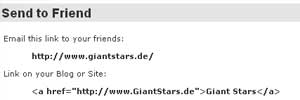

Enabling comments is often a good way to generate more interest to your linkbait, if you are already using a blog this should be an easy process. If you not using a blog platform, there are some very good and cheap comment scripts available to download, just Google it.

The point of the link-bait is to generate links, but the links to the linkbait page itself is not going to do much in terms of targeting your keyword. So a little bit of clever sculpting is required to take in the full benefit. Remember Google discounts the links contained in menus and footers so the optimal strategy is to include an honest disclaimer / message either before or in the middle of the content. Be upfront and honest, something like this will work:
” This hilarious post was brought to you by the good people at website.com, we make keyword 1 and Keyword 2 – which we think is a pretty cool product because ( insert content related to your keyword ) “
Setting up links from a related posts or articles table is often a good option as well.
Link the keywords to the homepage or whichever page you are trying to optimize the keyword for. Never use hidden text or super small text to try and hide this and remember the more outbound links you place on the page, the less powerful it becomes, there is no need to link to everypage on your website, pick the top 2 – 5 pages you have already done the SEO work on to link to.

Step 1 – Put on your best social media marketing hat and distribute your linkbait through the usual social bookmark channels, if you are planning to produce linkbait on a regular basis, there are plenty of online services that can help you distribute your linkbait to save you time. It’s important to understand the link herd mentality on social media sites, a fresh account with no reputation will not get much attention, even if the content is great. So it is important to distribute your piece through a well established account. If this is not possible, you can always find people / companies that will distribute the piece for you for a monetary return.
Step 2 How to get the real juicy links – Put on your creative hat and hunt down websites and blogs manually that are related to your linkbait and contact them directly, in particular if the piece has educational value, make sure to contact authority figures and educators directly. For example if your topic is about astronomy, email the professors and tutors directly, don’t bother emailing generic addresses such as “info@”, these will be flagged as spam and deleted. Also don’t forget to also contact your local journalists, often they are looking for interesting / off-beat topics to fill in the gaps, you might just land yourself a great link from a authority news site.
Link building is one of the hardest and most valued service in search engine optimization today, using link bait can give you an edge when it comes to negotiating and generating links for you and your client.
If you are an SEO, remember your clients business may not be glamorous or interesting enough to generate viral links, so using your creative skills to come up with a linkbait idea and following the tips above can work very well, often a client may not be comfortable with the idea of linkbait at first, but if you have done your research there are always good examples to present to them, even better if you can find a linkbait example by their competitors.
If you are a webmaster or website owner thinking about linkbait link building, you are in a good position to test and trial these techniques. Linkbait, like viral marketing can sometimes be hit and miss, don’t get discouraged if your first few attempts don’t work out. With practice you will get better at building link-baits and coming up with link-bait ideas.
Which leads me to the final chapter of our guide – Developing the perfect linkbait idea / topic. Please subscribe to our RSS feed or follow us on twitter @little_engine to be notified when the final part of our guide is online.

Introduction to the Link Bait concept
The art of link bait is a combination of creative ideas and great execution; the term linkbait itself refers to the act of creating content for the purpose of acquiring links to a website to increase its search engine rankings. The content itself is considered as ‘ the bait ‘ , which the SEO hopes to catch ‘ links ‘ from websites of value.
One of the most powerful and organic methods to generate contextual backlinks is by the way of link bait.Through this post I hope to share with you the basics of link bait techniques from idea to execution.
(more…)
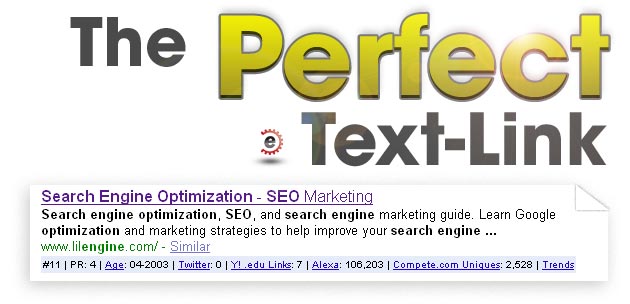
I find myself often on the hunt for that one great link. Many people simply do not realize the impact one text link could have on your website, its natural search ranking, and trust and authority of your website as viewed by the search engines.
Wherever I am around people — community functions, industry events, sporting events, ANYWHERE pretty much—a constant thought is “Hmm, I wonder if this person could help me get a link, or do they know someone who can help me get a link.” It is unfortunate but Matt Cutts is right: the best links are not bought or sold or gained by email spam. They are ones you network long and hard to get, and they are not easily accessible.
Pardon me for a moment to clarify: we all know that one link is not going to make your website the next Amazon.com. But what this one great link can do is make everything else you have done to your website become much more important. If you get the one great link you have been looking, for guess what happens? Every other link to your site typically becomes more valuable, every updated title tag on your website becomes that much more relevant, those hours of perfecting your internal link structure all seems to be coming together.
These great links are not easy to find, even a creative full time link builder like myself can typically only produce a few of these per month, and this includes 12 years of experience, and 12 years of relationships. The average webmaster might only find one link like this per year! Some webmasters pass up link opportunities because usually it comes with a bunch of red tape, prerequisites and potentially gift giving to obtain it, so they procrastinate and just say no way. (And if you run across one of these great links and aren’t going to jump through the hoops to get it, email me, I will take it. )
However the value can be supreme: I have personally seen one link take a website in a somewhat competitive niche to number one after being in place for a period of 120 days. I’m not saying there’s a magic bullet, but the effects of your hard link building work pay off when powerful links come into place. Also this link continues to pay dividends as it grows more important over time.
You probably now want to know what this great text link looks like, so when it comes around you will be prepared to grab it. It will be from a website that has been online since the late 80’s usually around 1986-1988. It will have a minimum of a Google Tool Bar Page Rank of 7 but typically the great ones are PR8’s +. It will be in the top 5000 in Alexa Ranking and have VERY few external links. As for backlinks, it should have so many that no one could possibly count, but if you do a link:www.thegreatsitelocation.com you will see Google showing somewhere in the 10K range and in Yahoo you will see 250K plus.
It may not be on a directly related website, as I am sure there are not many PR8 websites on the net selling baby strollers, but you can work around this when it comes to a fantastic link. These are not the only prerequisites of course, you’ll need your own intuition built from your own link building experience, and I usually have a gut feeling when I find one. What any SEO will fully agree on is a link that fits this profile is very valuable and if you are serious about your internet marketing, then you better get out your check book or your scissors (so you can cut through all the red tape that is going to be involved) and get this link.
Share this post http://bit.ly/B98o2 . Sphinn this post